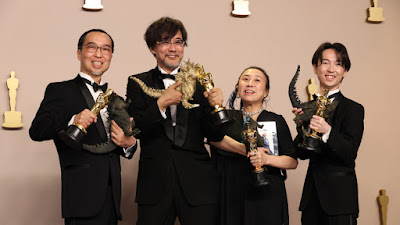Undark has an interview with Paul Sutter about the problems of science. Now before I get into my reaction, I want to say that this interview was conducted because Sutter has a book, Rescuing Science, that covers these topics. I haven’t read the book. Maybe it has more nuance than this short interview.
Sutter has a lot of complaints about the current state of science, but his big one?
(A)n inability for scientists to meaningfully engage with the public.
The interview tries to peel back the layers of why this is. Sutter, like many academics, blames the incentives.
We, as a community of scientists, are so obsessed with publishing papers (that) this is causing is an environment where scientific fraud can flourish unchecked.
Sutter goes on to critique journal Impact Factor and h-index and peer review and a lot of the usual suspects. But Sutter’s solution to these big systemic problems might be summed up as, “Scientists need to get out more.” He wants scientists to do more public communication. Lots more.
Scientists should be the face of science. How do we increase diversity and representation within science? How about showing people what scientists actually look like. How do people actually understand the scientific method? What if scientists actually explained how they’re applying it in their everyday job.
This is a very familiar view to me. It’s why I started blogging here more than twenty years ago. Much of what I have achieved professionally, I can credit in part or in whole, to blogging and otherwise being Very Online. But I try to have a clear-eyed view of what I was able to achieve in building trust in science: probably not much.
I see three problems.
First. it feels like Sutter is saying, “If only scientists would just talk to non-scientists more.” I am reminded of this:
If your solution to a human problem involves the phrase “If only everyone would just...”, you don’t have a solution. Never in the History of Ever has everyone “just” anything... and we’re not likely to start now.
(This tweet is from Laura Hunter. I remember seeing some version of this on Twitter, but can’t recall if I saw Laura Hunter’s tweet specifically.)
Second, lots of excellent scientists are not great at communicating to
non-specialist audiences. They can’t stop using words like “canonical”
in interviews. They aren’t trained in this.
Third, Sutter points out that the interests of science journalists are not
always aligned with the interests of scientists. But that is a feature, not a bug. Journalists are not supposed to be stenographers,
or cheerleaders, for science. And Sutter spends lot of time criticizing journalism while the profession is practically collapsing in front of our eyes while we watch. Local news outlets are vanishing. Online publications are shuttering and laying off hundreds of staffers. Popular Science is gone.
Wait, I have more than three.
Fourth, this sounds like trying to fix traffic jams (systemic problems) by asking people to drive carefully (individual actions). That doesn’t have a good record of success.
In the interview, Sutter doesn’t come to grips with the systemic issues of money and power that are being leveraged to make coordinated attacks on science.
I’ve said it before: Individual scientists – who are struggling to write grants after grant to keep their labs afloat – are not on a level playing field with international media corporations backed by billions of dollars. Or tech corporations that write recommendation algorithms. Or religions that have a several thousand year head start in winning hearts and shaping culture.
I am guessing that if Sutter were to point to the sort of people who exemplify his preferred method of restoring trust in science by getting out and talking publicly, he might point to Anthony Fauci or Peter Hotez – both of whom were excellent communicators throughout the COVID-19 pandemic. But we have seen the power asymmetry: Fauci and Hotez were physically threatened for publicly talking about science.
Anti-science is large, well-funded, and organized. Single scientists with a blog – or even a few invitations to speak on national platforms – are overmatched.
External links
Paul M. Sutter Thinks We’re Doing Science (and Journalism) Wrong
Rescuing Science



